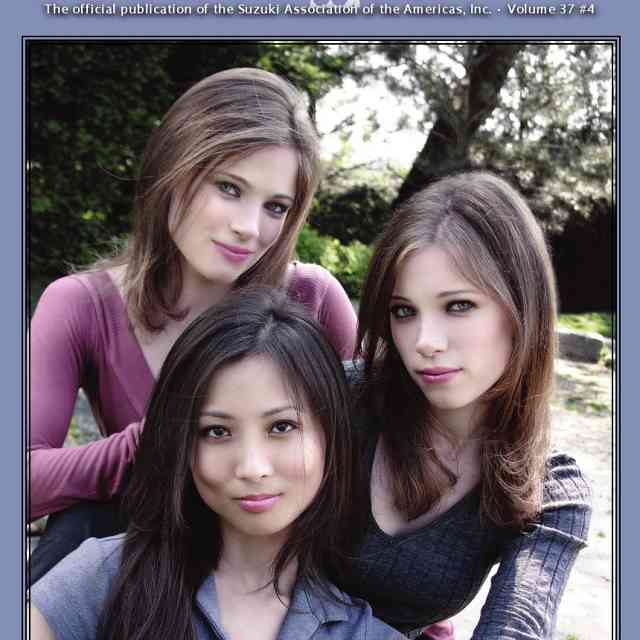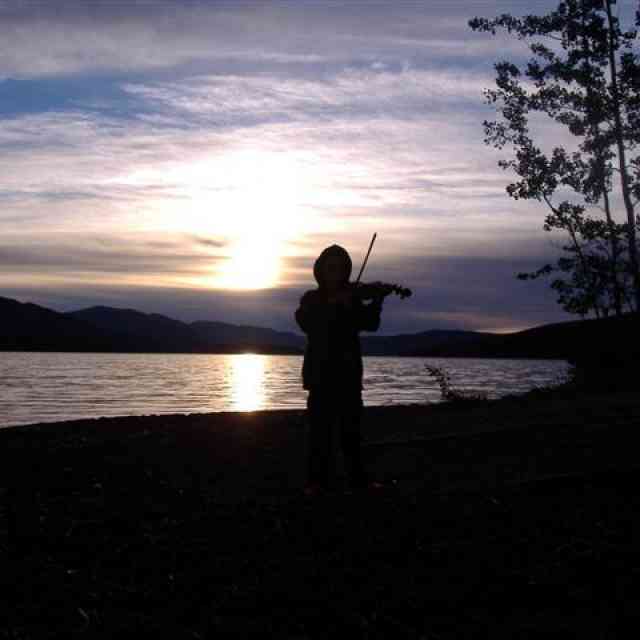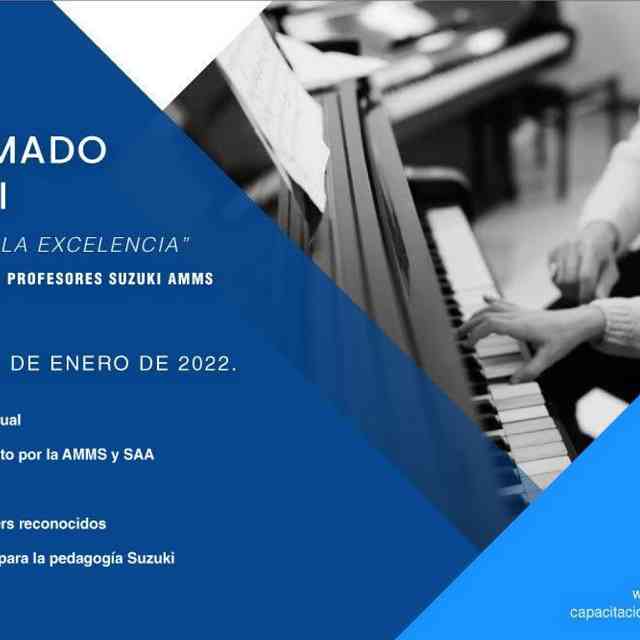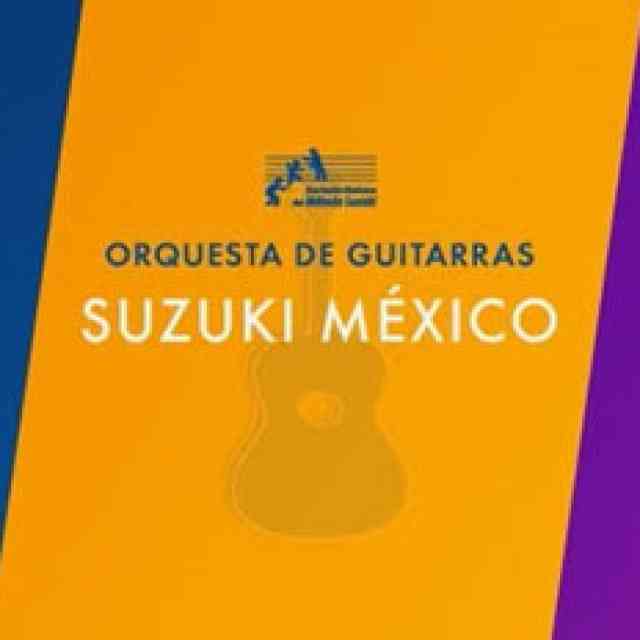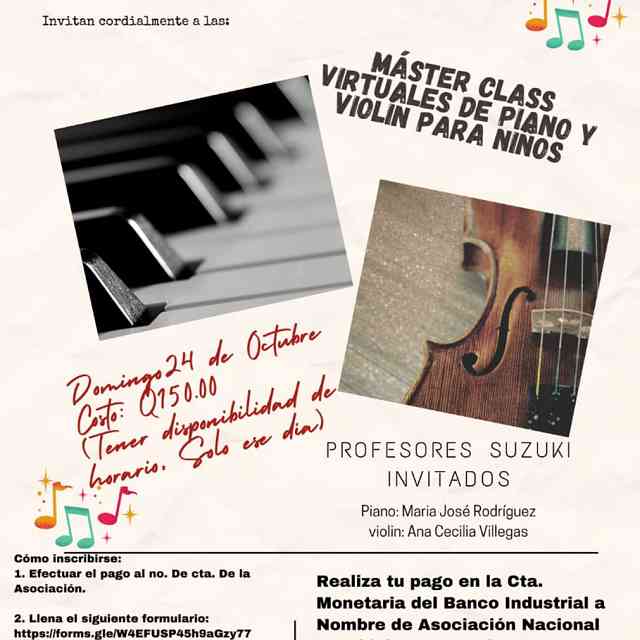cavelicaVIII Taller Nacional en Huancavelica
Compilado por Caroline Fraser
Asociación Suzuki del Perú
VIII Taller Nacional en Huancavelica, Mayo 20-24, 2009.
Traducido por Ximena Marky
Todos los años, la Asociación Suzuki del Perú (ASP) organiza un taller fuera de la ciudad de Lima. El propósito del evento es brindar apoyo a profesores y alumnos del Perú que se encuentran geográfica y económicamente marginados. Este año, el taller se realizó en la región menos accesible del Perú: Huancavelica. La provincia de Huancavelica se sitúa al centro del país, en lo alto de las montañas. No hay un aeropuerto cerca. Desde Lima, hay que viajar 7 hasta la ciudad de Huancayo, pasando por Ticlio, a 5000 metros sobre el nivel del mar (donde funcionaba la vía férrea más alta del mundo). Desde el terminal en Huancayo, tomamos un taxi que nos lleva a otro taxi que nos transportará las 3 horas restantes por un camino recientemente asfaltado hasta el pueblo de Huancavelica. La última parte del camino la compartimos con burros, vacas, ovejas, cabras y sus criadores, en muchos casos niños. El camino está cerrado durante ciertas horas del día debido a derrumbes y huaycos ocasionados por la lluvia, y a pesar de eso, el panorama es escalofriantemente hermoso: un lugar totalmente aislado, de terreno accidentado e interminable.
Gracias al Padre William Lopez, a nuestra asistente Maria Nuñez, que viajó antes que nosotros para tener todo listo a nuestra llegada, y a las maravillas del Internet; el taller fue anunciado localmente y se corrió la voz. Una delegación de 20 personas viajó desde Lima, incluyendo a 6 alumnos y sus papás. El taller se realizó en el Seminario para Niños, un oasis en medio del desierto: instalaciones adecuadas, un gran auditorio y amplias aulas. El frio era lo único perturbante, ya que no hay calefacción.
Algunos aspectos del taller fueron imposibles de planear: la cantidad de alumnos y profesores participantes fue todo un misterio hasta el día que comenzaron las clases. Tuvimos que decidir, una vez ahí, entre cobrar $6 o $3 por persona para la inscripción de alumnos y profesores.
En la ceremonia de apertura, el auditorio estaba lleno, en su mayoría por alumnos ansiosos por empezar sus clases. Mientras esperábamos que comenzara el evento, puse un DVD de alumnos tocando. De repente hubo silencio y los niños observaron y escucharon con mucha atención. Miré alrededor y fue increíble ver la cantidad de niños que quieren aprender música en un lugar donde prácticamente no hay profesores! Los únicos profesores Suzuki en el área son el Padre William, que no tiene mucho tiempo, y dos de sus ex-alumnos, Reuben y Roosevelt, quienes aún no han podido completar su capacitación como profesores.
El primer día de clases la gran sorpresa fue la llegada de 120 alumnos de Flauta Dulce! Teníamos sólo dos profesores para trabajar con ellos: Luciana Castillo y Sandra Tello, que viajaron la noche anterior desde Lima. Más de 50 alumnos se presentaron para clases de piano. Roberta Centurión recibió a 12 alumnos por hora el primer día solamente. Qué harán estos alumnos una vez que nos vayamos? Hay tanto interés por aprender y nadie que les enseñe. En piano habían niños que tuvieron que lidiar solos con temas como “Fur Elise” o “El Condor Pasa”. Le pregunté a una mamá con quién estudiaba su hijo y me respondió muy orgullosa: “su profesor es Cristian”. Cristian tiene 10 años y es el hermano mayor.
En el curso de Educación del Talento hubo más de 50 participantes, entre alumnos del Seminario y jóvenes que también están en la carrera para ser curas. Estos chicos están aprendiendo música y sus profesores son ex alumnos del Seminario que estudiaron Flauta Dulce cuando eran pequeños. Una vez convertidos en curas, irán a regiones aisladas de Huancavelica y entenderán la importancia de empezar y apoyar programas de música para niños, gracias a la visión del Monseñor Mulloy y al arduo trabajo y dedicación constante del joven Padre William.
En el curso de Estimulación Temprana, Maria Luisa Labarthe estuvo en un salón lleno de papás, mamás y profesores interesados en la introducción de niños pequeños a la música. Como escribe ella misma en su artículo: lo más impactante fue la habilidad de los bebés para “captar” todo.
Un joven se me acercó a preguntarme si podía tocar algo en violín para que lo escuche y le de una clase. El era autodidacta. No hay profesores de violín en Huancavelica.
Todos los niños tocaron en el Concierto Final, adornados con lindas chalinas de colores, hechas en Huancavelica. El taller terminó con un grupo bailando la tradicional Danza de las Tijeras, también de Huancavelica. Fue muy emocionante para mí ver a tantos niños alineados en las calles para despedirnos, mientras la orquesta del colegio tocaba “Scotland the Brave”, en lo alto de los Andes Peruanos!
La música es capaz de sobrevivir incluso bajo las condiciones más difíciles. Me pregunté qué hubiera hecho el Dr. Suzuki si se hubiera enfrentado a una situación como esta, con tantos niños y tan pocos profesores en un solo lugar. Me respondí a mí misma que simplemente hubiese empezado a enseñar. Y eso es lo que hicimos. Plantamos algunas semillas.
El Milagro de Huancavelica
De Maria Luisa Labarthe
Hace como 18 años, un día de diciembre, tal vez cuando hacíamos los preparativos para uno de nuestros primeros festivales tuve una llamada en mi casa,“la llamó el obispo de Huancavelica,” dijo mi empleada, “¿quién?” pregunté. “Yo no lo conozco, debe ser una broma.” Unas horas más tarde, casi a las once de la noche sonó el teléfono y oí una voz que me dijo, “Profesora, yo soy el obispo de Huancavelica, el padre Mulloy; me ha hablado de usted el gerente del Banco donde tengo mis cuentas y me dice que hay un método para enseñar música y que usted me puede informar” (en ese momento yo era la profesora de piano del hijo del gerente). ”Sí,” le contesté. “Es el método Suzuki. Justamente vamos a tener nuestro festival y sería bueno que usted viniera,” le dije. Él me contestó que sólo quería los libros del método, puesto que él ya sabía música. Sólo necesitaba un buen método para enseñar. Yo le dije que no sólo se trataba de un método sino de una filosofía y que los libros no le iban a decir nada, que él tenía que asistir al festival para aprender. “O sea, ¿como alumno?” me preguntó. “Sí Monseñor, como alumno”. “Bueno, si tengo que ser alumno, seré un alumno Suzuki”.
Le di los informes y las fechas y no volví a saber de él hasta que el primer día del festival cual sería mi sorpresa cuando vi a lo lejos a un sacerdote altísimo con dos religiosas, una profesora y un niño de unos 12 años. Me sorprendió ver a un niño tan joven. El monseñor me dijo que este niño también se iba a preparar para ser profesor. Ellos siguieron los cursos y durante el festival el Monseñor se me acercó y me dijo que estaba impresionado con las ideas del Doctor Suzuki: “todos los niños pueden aprender”, y que él las iba a aplicar en Huancavelica con sus niños.
Lo más sorprendente fue lo que sucedió al año siguiente en el festival. Ellos regresaron con alumnos tocando las canciones del Libro Uno en piano. Los niños tocaban con mucha musicalidad y muy felices. El monseñor y las personas que vinieron habían trabajado todo el año con los niños, contando con un solo piano de la parroquia y un profesor que era casi un niño. Y la profesora que solo sabía tocar con una mano cantaba para ayudar a los niños a memorizar las melodías. Un cartón con teclas dibujadas estaba colocado en la mesa de las casas de estos niños y ahí hacían sus prácticas. Solo podían usar el piano por momentos. Con todas estas dificultades ellos lograron lo que la Asociación Suzuki llamaría: “El Milagro de Huancavelica.”
Mientras los profesores de EE.UU. nos aconsejaban tener dos pianos para escuchar, ver mejor al alumno y tener un buen equipo de música, estos niñitos habían llegado a un nivel de musicalidad y destreza sin tener nada: simplemente con el deseo de aprender y con unos profesores con fe en si mismos y en sus alumnos. Y así es como sigue hasta hoy el programa Suzuki en Huancavelica.
Acabamos de regresar del VIII Taller Nacional Suzuki, que esta vez ha tocado ser en Huancavelica. Viajamos Caroline Fraser (piano), Roberta Centurión (Educación del Talento), Luciana Castillo y Sandra Tello (flauta dulce), y yo para Estimulación Temprana. Huancavelica es uno de los pueblos más pobres del Perú, con un clima muy frío y mucha altura. El Padre William, el mismo niño que asistió al festival años atrás, es hoy el que dirige el programa Suzuki en Huancavelica, y él organizó el taller para nosotras.
Hemos tenido 260 niños en total. Todos querían tocar, todos querían tener una flauta: las flautas no alcanzan, ellos las usan por turnos. La musicalidad de estos niños es increíble. Tuvimos un concierto y un “pasacalle” donde participaron todos. En Estimulación Temprana tuvimos más de treinta bebes y treinta profesoras. Los bebes me sorprendieron por su capacidad de captar todo tan rápidamente. Mucho más rápido que mis bebes de la ciudad. Pienso que es porque estos bebes desde que nacen escuchan dos idiomas: su idioma nativo, el quechua, y el español. Además están muy cerca de sus padres y de la naturaleza.
Todas mis canciones tenían sentido cuando hablaba de las estrellas, de los animales, de la nieve y de la lluvia: ellos están muy cerca de todo eso. Al final se presentaron con sus mamás en el concierto acompañados por niños tocando “Allegro” en flauta mientras ellos bailaban con sus mamás. Fue muy emocionante. Nos despedimos entre niños agitando pañuelos blancos y una banda tocando el Himno Escocés en honor a nuestra querida Caroline.
Mi felicitación especial a mis queridas colegas y amigas de siempre: Roberta Centurión de USA y a Caroline Fraser de Escocia, por su dedicación y entrega a los niños de mi país.
Festival in Huancavelica
Compiled by Caroline Fraser
The Suzuki Association of Peru
VIII National Workshop, Huancavelica May 22-24, 2009
Every year the Suzuki Association of Peru (ASP) organizes a workshop outside the capital city of Lima. The purpose of the event is to support the teachers and students living in geographically and economically isolated areas of the country. This year the VII National Workshop was held in the most disadvantaged region of Peru, Huancavelica. Huancavelica lies in the centre of the country, high in the Andean mountains. There is no airport nearby. By road from Lima it takes seven hours to travel first to the city of Huancayo, passing through Ticlio, which at nearly 5,000 metres used to boast the highest railway junction in the world. At the bus terminal in Huancayo, a taxi takes the passengers to find another taxi which will undertake the additional three-hour journey on a recently paved road which winds its way to the town of Huancavelica. The final stretch of road is shared with donkeys, cows, sheep, goats and their tenders, who at times are just children. The road is closed for a certain time each day due to the mud slides caused by the torrential rainstorms in the mountains. The scenery is breathtakingly beautiful: remote, rugged and expansive.
Thanks to Padre William Lopez, to our assistant, Maria Nunez, who traveled ahead of time, and to the wonders of the Internet, the Workshop was advertised locally and the word was spread. A delegation of twenty traveled from Lima, including 6 students and their parents. The Huancavelica Workshop was held in the Seminary for young boys, which is like an oasis in a desert; adequate installations which include a spacious auditorium and ample classrooms. The bitter cold is all the more penetrating as there is no heating in the buildings.
There were certain aspects of the Workshop which were not possible to plan: how many children and teacher participants would attend was a mystery until the first classes began. There was some discussion as to whether the tuition should be $6 or $3 per person for both teachers and students.
At the Opening Ceremony, the auditorium was packed full, mostly with school children anxious to receive their classes. As we waited for the event to begin I put on a DVD of children playing. The audience was hushed and the children watched and listened with great attention. I looked around and was astonished at the number of children wanting to learn music in a place where there are practically no music teachers! The only teachers are Padre William, who has little time to devote to music instruction these days, and two of his ex-students, teachers Ruben and Roosevelt, who have not yet had the opportunity to complete recorder teacher training courses.
On the first day of classes, what a surprise when 120 recorder students turned up! And there were only two teachers to work with them: Luciana Castillo and Sandra Tello, who had traveled overnight from Lima. More than 50 students appeared for piano lessons. Roberta Centurion had 12 students each hour during the first day. What would these children do when we left? There was so much interest and no one to teach them. In piano there were children who were self taught, struggling through Für Elise, or the Condor Pasa. When I asked one mother who her child was studying with, she proudly told me “Cristian is his teacher.” Cristian was his 10-year-old brother.
In the Talent Education course there were over 50 participants, including young men who were training to be priests, and many young students from the Seminary school! These young men are all learning music, being taught by their fellow student who had studied recorder as a child in the seminary. These priests-to-be will eventually go to work in remote regions of Huancavelica and will understand the importance of starting and supporting music programs for the children, thanks to the vision of one Monsignor Mulloy and the hard work and dedication of the young Padre William. In the ECE course, Maria Luisa Labarthe had a class full of parents and teachers interested in learning how to introduce music to young children. As she writes below, she was delighted with the babies’ abilities to “catch” everything. A young man came to me asking if he could play something for me on the violin and could I give him a lesson. He was self taught. There are no violin teachers in Huancavelica.
All the children performed in the Final Concert adorned with their beautiful brightly coloured, made-in-Huancavelica woolen scarves. The Workshop ended with a dance group performing the traditional rich and colorful Huancavelican scissors’ dance. How moving for me when the children lined the streets to wave goodbye, and the local school band played Scotland the Brave, high in the Peruvian Andes.
Music survives in the harshest conditions. I wondered what Dr Suzuki would have done when faced with so many children and so few teachers. I decided he would have just started to teach. So that is what we did. We planted some seeds.
[javascript protected email address] www.suzukimusica.com.pe
A Miracle in Huancavelica
by Maria Luisa Labarthe
Translated by Caroline Fraser
About 18 years ago on a December day, perhaps when we were preparing for one of our first festivals, I received a phone call. “The Bishop of Huancavelica called you,” said my assistant. “Who?” I asked. “I don’t know him. It must be a practical joke.” A few hours later, at almost 11 o´clock at night, the telephone rang again and I heard a voice saying, “I am the bishop of Huncavelica, Father Mulloy. My bank manager spoke to me about you, and he said that there is a method for teaching music and that you could tell me about it.” At that time I taught the bank manager’s son. “Yes,” I answered. “It is the Suzuki Method. We’re actually going to have our festival soon and it would be good if you could attend”. He answered that he only wanted to buy the books as he already knew about music. He only needed a good method book so that he could teach. I told him that it wasn’t only about a method, but it was based on a philosophy, and that the books would not tell him anything. He would have to come to the festival to learn about it. “You mean, as a student?” he asked. “Yes, Father, as a student.” “Well, if I have to be a student, I will be a Suzuki student”.
I gave him the information about the festival, including the dates, and I didn’t hear anything more from him until the first day of the festival, when to my surprise I saw in the distance a very tall priest with two nuns, a teacher and a child of about 12 years of age. I was surprised to see a boy so young. Monsignor Mulloy told me that this boy too would be preparing to be a teacher. They took the courses and during the festival Monsignor approached me and said how impressed he was by Dr Suzuki’s ideas: “All children can learn.” He was going to apply these concepts with the children in Huancavelica.
The most surprising thing is what happened a year later at the next festival. The original delegation returned with children playing Book One pieces on the piano. The children played with a lot of musicality and joy. Monsignor and his delegation had worked all year with the children with only one piano, one teacher who was really a child himself and a teacher who only knew how to play with one hand at a time, and who had sung to the children to help them memorize the melodies. The children had cardboard keyboards in their houses so that they could practice. They could only use the piano for a few moments each. With all these difficulties they achieved what our Suzuki Association would call “The Miracle in Huancavelica.”
While U.S. teachers told us that we must have two pianos to be able to listen and see our students better, and that we should have good sound equipment; these children had achieved a level of musicality and skill without anything—just with the desire to learn and with teachers who had faith in themselves and in their students. And that is how the Suzuki program has continued in Huancavelica.
We have just returned from our VIII National Workshop, which this year was held in Huancavelica. Caroline Fraser (piano), Roberta Centurion (Talent Education), Luciana Castillo and Sandra Tello (recorder), and Maria Luisa Labarthe (Early Childhood Education) traveled from Lima to teach. Huancavelica is the poorest region of Peru with a very cold climate and high altitude. Padre William, the same 12-year-old boy who attended the festival so many years ago, is now the person directing the Suzuki program, and he organized the workshop for us.
There were 260 participants in total. Everyone wanted to play, and everyone wanted a recorder. There were not enough recorders to go around. The children had to take turns with them. The children demonstrated excellent musicality. We had a concert and a “pasacalle” (concerts in the streets) in which everyone participated. In Early Childhood Education we had more than 30 babies and 30 teachers. The babies surprised me by their ability to “catch” everything so quickly—much more quickly than my babies in the city. I think it is because these babies hear two languages from birth: their native Quechua and Spanish. Also they are very close to their parents and to nature. All my songs had immediate meaning to them as we sang about the stars, the animals, the snow and the rain; they are very close to all of this. At the end of the Workshop the babies and mothers made a presentation, dancing accompanied by recorder students playing Allegro. It was very moving. The children bade us farewell lining the streets, waving white handkerchiefs while a school band played “Scotland the Brave” for our dear Caroline.
My special congratulations to my colleagues and friends for ever: Roberta Centurion from the United States and Caroline Fraser from Scotland, for their dedication and devotion to the children of my country, Peru.

